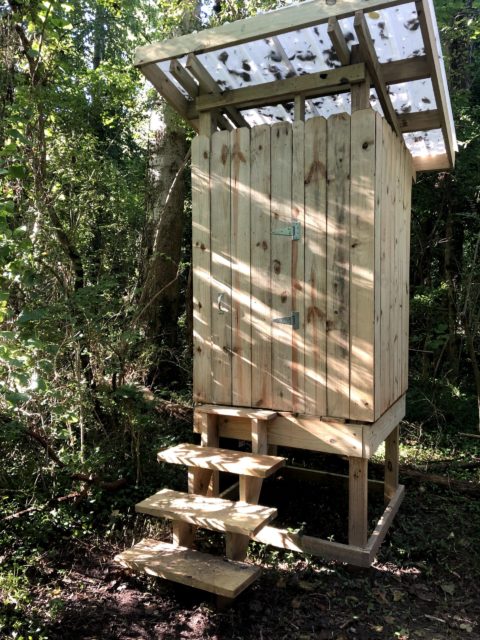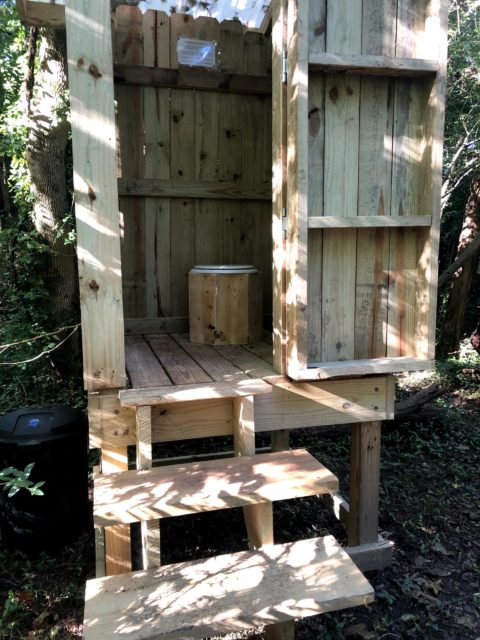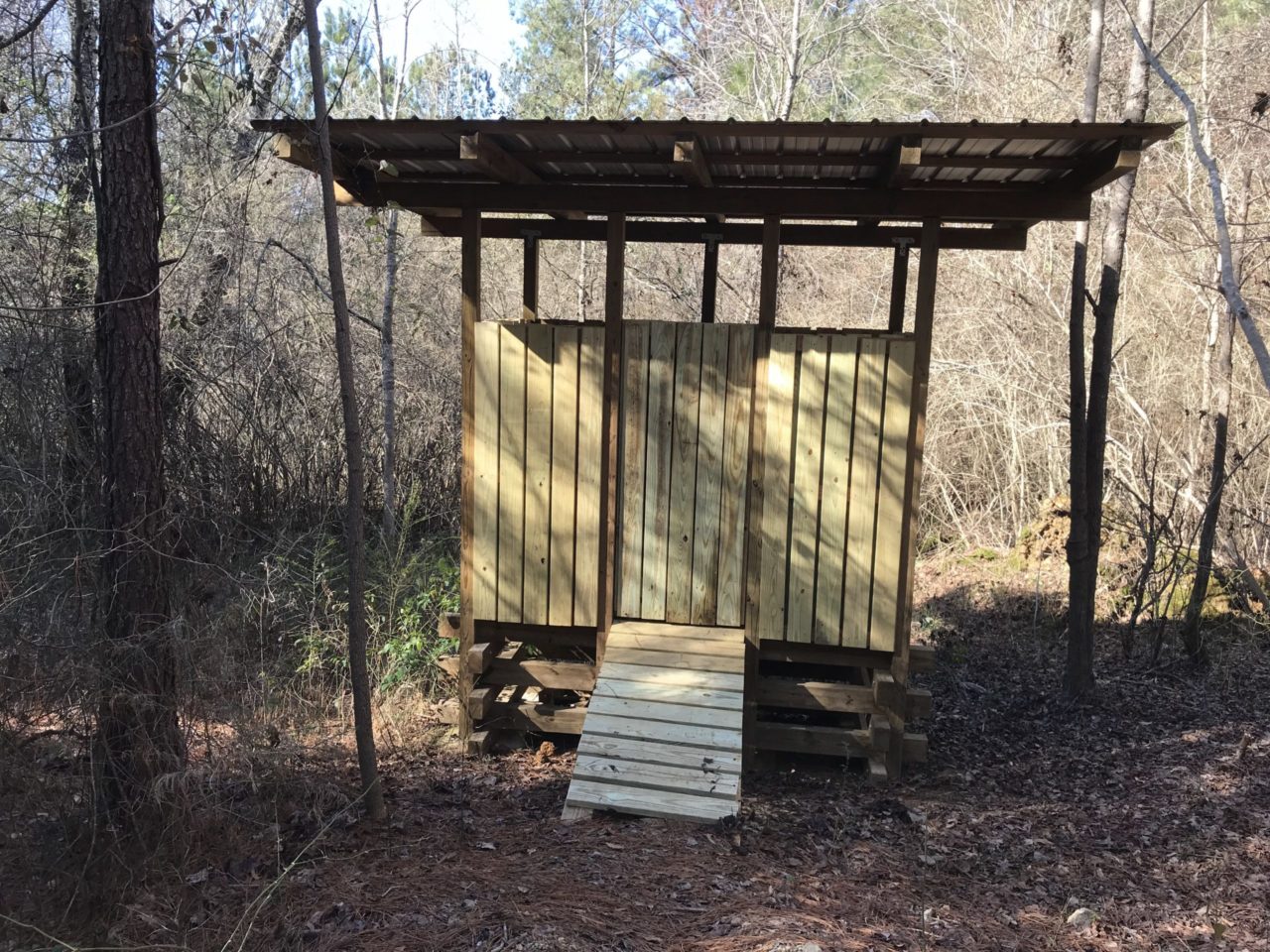Composting Toilets:
A Turds Eye View
By Sam Lennon
Pooping in the woods is more complicated than you think. There are quite a few differing methods, but one stands out among the crowd.
The first, most common method of dealing with waste is the cathole excrement method. You dig a small hole, do your business, and bury it. This is an okay option for backcountry trails. One advantage is there is no need to build a structure, meaning the trail can feel more remote. However, on more popular trails, these cathole excrements can lead to a real sanitation issue. Animals are attracted to our scat and will often uncover it. A highly trafficked trail that has been highly defecated upon creates an eyesore and can even spread disease.
Another option is packing out your poo. Go in your wag bag and take it back home with you. This is one alternative to the cathole, and the advantage is that you leave nothing behind. There are a couple of drawbacks though. For one, many people simply do not like the thought of toting their poop around with them and simply refuse to do so. There is also concern regarding human excrement winding up in landfills as opposed to being treated properly.
Composting toilets address the disadvantages of both other methods. User compliance is high, as these privies differ little from a conventional bathroom in terms of comfort, and unlike with catholes, fecal landmines no longer litter the trail. There is an initial cost to build an outhouse, and some maintenance required, but for more popular trails, the cost is well worth it. There are already at least nine composting toilets on Chattanooga trails. They are located in places like Lula Lake, Enterprise South, Maclellan Island, and the major trailheads of the Cloudland Connector Trail.

In addition to solving some of the convenience and sanitary issues, composting toilets turn our waste into a commodity. Our waste contains nitrogen, potassium, and phosphorus, all of which are essential nutrients for plant growth. Instead of putting strain on the environment by tossing disposable poo-filled bags in the trash, we can nurture nature by squatting down and making fudge. Producing fertilizer the conventional way uses quite a bit of unrenewable energy. By creating and using the fertilizer onsite, we eliminate much of the pollution associated with manufacturing fertilizer.
What’s not to love about composting toilets? The environmental benefits paired with comfortability make them an ideal solution to human waste management in our highly trafficked natural areas. And at Wild Trails, we are committing to build more composting privies wherever doody calls. There are at least twelve trailheads in Chattanooga that would benefit from one.
But how do these things work? Building a composting toilet is all about creating an ideal space for aerobic decomposition to occur. While aerobic decomposition sounds complicated, really it is just allowing mother nature to take her course. However, we can do a few things to expedite that process. The first is to allow adequate airflow into the decomposition chamber.
Secondly, we control the moisture content. The waste needs to be moist but not too wet. Temperature also affects the process. The warmer it is the more quickly decomposition will occur. Finally, the secret ingredient is wood shavings. Throw in a scoop when you poop, and the carbon-rich shavings kickstart the decomposition of that cruddy concoction.
There are several types of composting toilets out there which use differing methods to compost the waste. The toilets we build are called moldering privies because they cold compost the waste. The ideal temperature for aerobic decomposition is over 100 degrees Fahrenheit, because many of the bacteria that break down the waste love the heat. Heating up the compost pile to this temperature is not exactly practical in the middle of the woods. Decomposition will still occur at lower temperatures, just at a slower rate. The lower temperature used also means that the compost is not considered safe to use in food production; however, it is totally safe for distributing along the forest floor or even for growing daffodils.
To offset the inefficiency of lower temperatures, we optimize the aeration of the compost by allowing adequate ventilation in the composting chamber and by regularly mixing the compost pile. The bacteria which decompose the waste need air to breathe just like you and me. Aeration is what keeps the compost from smelling. You might be surprised to find that this method of composting does not produce a foul odor. The presence of excess oxygen ensures that the byproduct of decomposition is odorless carbon dioxide and water vapor. If there is a lack of oxygen, the process becomes anaerobic and produces methane and hydrogen sulfide instead. That’s when things get stinky.
The wood shavings encourage decomposition in three distinct ways. First, they absorb excess moisture. They also keep the pile from becoming overly dense which would inhibit aeration. The shavings also improve the carbon to nitrogen ration. Human waste is rife with nitrogen, and the wood shavings are rich in carbon. The shavings help to achieve the ideal carbon-to-nitrogen ratio of 25:1.

To microbes, carbon is like the simple sugars we eat. It provides quick energy to keep things moving. Nitrogen is like a big ol’ steak. The protein promotes growth but does not give immediate energy. If there too little carbon present, the nitrogen will be left behind and decomposition slowed. While the science can get complicated, the process is straightforward and simple. And in the end, a problematic waste product is disposed of and converted into a sustainable resource.
In addition to the conversion of poop to humanure, composting toilets will provide comfortability and sanitation to the more well-trafficked trails around Chattanooga. All the while managing waste in an eco-friendly way. At Wild Trails we believe that composting toilets are a step in the right direction towards sustainable waste management, and not just for trails. Composting toilets are not limited to the backcountry they are a greener alternative to septic tanks and with the proper infrastructure, could even be used as an alternative to conventional sewer systems.
Unfortunately, the topic of feces is often overlooked, and we would rather not think about what happens to our poop after we flush or the consequences of that flush. Did you know that according to the EPA, toilets are responsible for the majority of household water use? Older commodes can use upwards of 6 gallons of water per flush. And that is only one facet of waste associated with our wastewater systems. Don’t get me started on the energy needed to operate our country’s wastewater treatment plants ($2 billion in electric costs yearly). It’s time to talk about poop, people. We hope to expose more people to the possibilities of composting toilets by building privies on trails throughout our community. Look out for a Wild Trails composting toilet coming to a trail near you!

